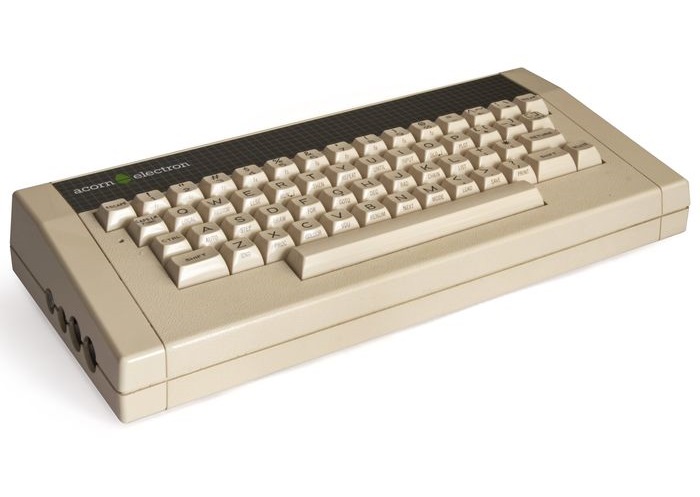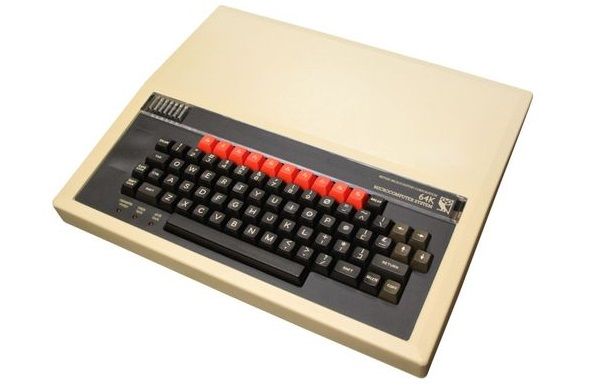
Micro Mart
 9th August 2001
9th August 2001
Published in Micro Mart #658
In a departure from his normal 'review' style of this section, Gordon Hulmes describes the evolution of the Acorn.
Computers Of Yesteryear
In a departure from his normal 'review' style of this section, Gordon Hulmes describes the evolution of the Acorn.
The Later Acorn Models, The Electron, Master, ABC and beyond
Like the Sinclair Spectrum, I think the historical significance, long life and variety of models of the Acorn BBC requires a second part. Also, the Acorn Electron, a very popular computer, was very much a cutdown Beeb and as such would not really justify an article of its own. So here is the combined article of the Acorn Electron and Acorn BBC Master machines.
More Or Less
In my mind, and to many people, the BBC Micro was the greatest of all home micros. If we think of the 'golden age' of home computing as being from 1979 to 1987, it is hard to believe that such a complete, expandable, useful machine came out so early - in 1981. Why did all the other machines even stand a chance? Price, that's why. The BBC Micro (or Beeb as it quickly became known) was just too expensive. Considering that the whole of the BBC marketing department was behind the exercise, it's hard to imagine that they thought that the majority of the British public would be willing to splash out so much on a computer. Remember that this was the early 80's - it's normal nowadays for a PC and Playstation to be permanent living-room fixtures, even necessities, but a video recorder or microwave would have been much higher up most people's list of priorities than a computer. Of course parents were beginning to realise that computers were important for their children's education but at over £300, they would need a lot of persuading. It's not difficult to see Sir Clive Sinclair's frustration when his £100 machine was rejected. Personally, I was desperate for a Beeb when I had outgrown my ZX81, but I had to settle for a Spectrum then a Commodore 64 before finally getting hold of a second hand Beeb in 1984.
Electron
Acorn began to realise this and just before Christmas 1983, they launched the Electron. The Electron was a neat little machine, much smaller than the Beeb, especially its depth. The Electron was basically a cutdown BBC Model B. It used the same 6502A processor, same operating system, similar BASIC (known as BBC BASIC II). The biggest change was internal. The manufacturing costs, and therefore the price, were able to be cut considerably because most of the Electron's functionality was contained in a single ULA. The extra circuitry for the popular teletext - Mode 7 - was ditched. It also came with a lot less ports - just six - power, TV, video, RGB, cassette and expansion connector. The expansion connector, however, made it easy to upgrade the Electron. Acorn's Plus 1 interface plugged in to the expansion connector and gave two cartridge slots, a printer interface and allowed extra ROMS to be added. The Plus 3 interface was a 3.5" disc drive system that also plugged in to the expansion slot and came with an uprated power supply. The Plus 3 had a through connector so the Plus 1 could be added to the back of it if required. A number of third parties also made peripherals for the Electron. The Electron was popular but deserved better. It was launched just a bit too late to take full advantage of the 1983 Christmas buyers, many of whom had already purchased from Sir Clive. It sold well during 1984 but was never a huge success.
BBC B+
Acorn was in financial difficulty by 1984 and the company was rescued by Olivetti. An uprated Beeb was announced to help to sort out their problems. This was the Model B+. It was basically a BBC Model B with 64Kb or 128Kb RAM and a number of other issues fixed. It didn't sell very well and was not as popular as the original.
ABC
Although with its TV programme links, the Beeb was first and foremost seen as an educational machine, it was probably the most usable micro of its day. Add a disc drive and it could easily pass as a business machine. Acorn realised this and between 1985 and 1986 produced the Acorn Business Computer series. These machines were based on the Model B+, housed in a case that incorporated an integral mponitor and a separate keyboard. There were eight machines, with either no disc drives or hard drives and they came with between 64Kb and an unheard of 4Mb RAM. They had the Beeb's 6502A processor but also a second processor. There was a choice of a Z80 running CP/M, a 32016 running PANOS or a 80286 running DOS.
Master
By the end of 1985, the Electron and ABC machines were not selling well and the ever-popular Beeb was beginning to show its age. The BBC Master 128 was released in January 1986 as the answer to the combined problem. It was backward-compatible with the original Beeb [No, it wasn't. Its "improved" memory map meant that most games would not run unless they were rewritten - Ed] but had a number of enhancements. It used the 65C02 processor (a new version of the Beeb's 6502A), came with 128Kb RAM, all the Beeb's ports plus some new ones. Acorn's Econet network was included as were two cartridge slots like the ones on the Electron's Plus 1 interface and there was even space left inside the case for an internal modem. Outside, the new machine featured a numeric keypad. There were a number of improvements to the software too. BBC BASIC IV was included as was Acorn's wordprocessor (View) and spreadsheet (Viewsheet). The Advanced Disc Filing System (ADFS), which was first supplied with the Electron's Plus 3 expansion, was further enhanced and supplied with the Master to replace the Beeb's DFS. The enhancements allowed 3.5" discs to be used in addition to 5.25".
A number of versions of the Master were produced. The Master Compact was launched in September 1986 and was a BBC Master 128 with a smaller case featuring an integral 3.5" disc drive but missing some interfaces. The Master ET was designed as a network machine - a brave concept for a 1986 'home' micro. It had the Econet interface but no printer or disc drive interfaces as these, it was envisaged, would be accessed across the network. The Master 512 included a 80186 co-processor (a cheaper option than the ABC's 80286) running DOS system and 512Kb RAM. The Master Turbo inclued a second 65C02 processor.
Eureka
Whilst really out of scope for this series, I thought I'd end with a very brief look at what followed the Beebs. It was clear to Acorn that PCs were becoming the standard and that the 16bit 80x86 chips (that were optional second processors on the ABC and Master machines) were the way they were going so they developed their 32-bit chip - the Acorn RISC (Reduced Instruction Set) Machine (ARM). The Archimedes, based on the ARM chip, was initially released in 1987. They had between 0.5 Mb and 4 Mb of memory and up to a 20 Mb hard drive. They also came with an operating system called Arthur and BBC BASIC IV and cost between £800 to over £3,000.
Acorn's Early History
1978
Acorn founded by Herman Hauser and Chris Curry - Ex-Sinclair
1979 - 1980
System one to five produced
1980
Acorn Atom launched
November 1981
BBC Micro Model A and B launched
August 1983
Acorn Electron launched
1984
BBC Model B+ launched
ABC range launched
1986
BBC Master 128 launched
ARM2 processor launched (as BBC Master second processor)
1987
Archimedes series launched.
Fascinating Facts
- The BBC Model B+ was basically a BBC B with 64Kb or 128Kb of memory. It would appear to be an attractive machine. The problem was that the BBC's potential customers all had a Beeb by this time and it only managed to sell 28,000 units - less than half the number of the now ultra-rare ZX80!
- The most popular model in the Acorn ABC range was the Model 210 (later called the Cambridge Workstation). It used the 32016 processor, 4Mb RAM and a 10Mb hard disc. The PANOS operating system could be changed for Xenix.
- The basic BBC Master 128 cost £499 and the Master Compact, with 3.5" disc drive sold for £599.
- The BBC Master series was almost as popular as the original BBC Micro. By 1989 over a quarter of a million Master 128 (and variants - e.g. Compact) had been sold.
- The BBC used an enhanced Master 128 in its Domesday project of 1986. This consisted of a laser disc player linked to the machine and stored information about life in Britain in that year, which was contributed to mainly by schools.
- Acorn started developing a 32bit RISC processor as early as 1983. It was so secret that Olivetti was not told of its existence until their controlling share deal had been completed.
- Acorn's first production RISC processor (the ARM2) had only 30,000 transistors, featured a 32bit data bus and 26bit address bus. As a second processor for the BBC Master, it cost about £4,000 - although you did get 4Mb of RAM, enhanced BASIC and a set of development tools - bargain!
- When it was released, the ARM2 processor was ten times as powerful as the competition. It would be like someone suddenly releasing a 15GHz processor onto the market today. Only its price held it back.





